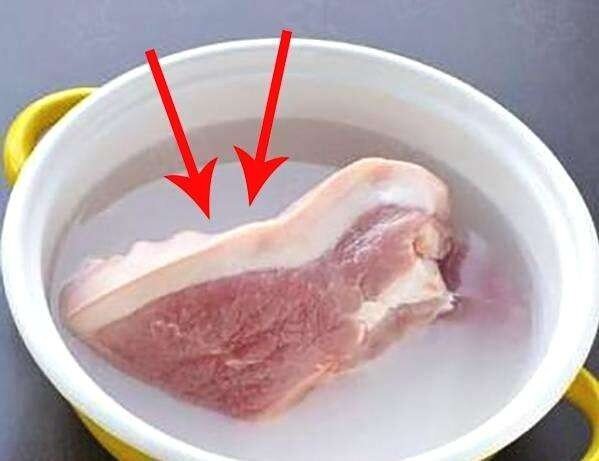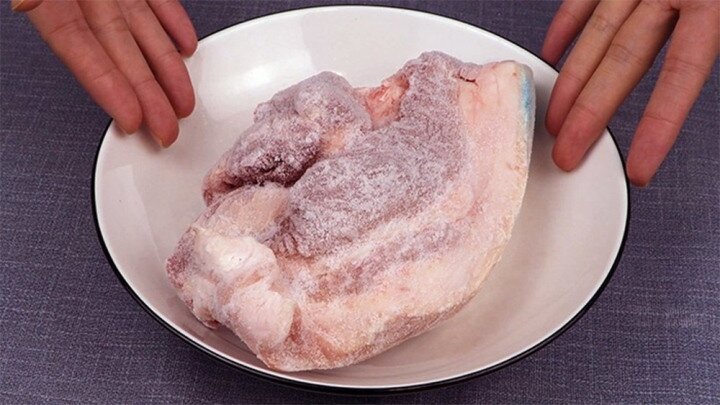Waiting for frozen meat to thaw by soaking it in water can be time-consuming and may result in a loss of the meat’s natural sweetness. So, what’s a more efficient way to thaw meat? If you’re looking for a solution, try these simple yet effective tips below – guaranteed to be quick while maintaining the quality of fresh meat.
Method 1: Soak the meat in a saltwater solution
Prepare a clean bucket or container, add a spoonful of salt, and stir to dissolve. Then, soak the frozen meat for about 10-20 minutes. The salt will help soften the meat without drying it out or diluting its flavor as regular water would.

Note: The meat won’t completely defrost, but it will be soft enough to cut into slices. This makes it easier to cook without a long waiting period. However, since the meat has been soaked in salt, adjust the amount of salt you add during cooking to avoid oversalting your dish.
Method 2: Use the defrost function on your microwave
If you have a microwave, thawing meat becomes even more convenient. Simply place the meat in a bowl or dish, put it in the microwave, select the “defrost” function, and adjust the time according to the weight of the meat. The microwave will automatically calculate the defrosting time to ensure even thawing without cooking the edges.

In addition to these two popular methods, you can also try the following efficient thawing techniques:
Thawing with cool water
Place the frozen meat in a sealed bag and submerge it in a pot of clean water maintained at a temperature of 8-10 degrees Celsius. Avoid pouring water directly on the meat to preserve its flavor. After 30 minutes, the meat will be sufficiently thawed and retain the same quality as freshly purchased meat.
Using warm sugar water
Mix warm water at approximately 40 degrees Celsius (a ratio of 5 parts cold water to 1 part boiling water works well) with 2 spoonfuls of sugar, and stir until the sugar is dissolved. Soak the meat in this solution for 7-10 minutes, and it will become tender while retaining its sweetness and vibrant color.

Instead of freezing large chunks of meat, it’s best to process them immediately after purchase. Wash the meat, cut it into smaller portions, and store them in ziplock bags or vacuum-sealed packages. This not only facilitates quicker thawing but also allows you to thaw only the required amount for each meal, rather than a large block of meat.






































